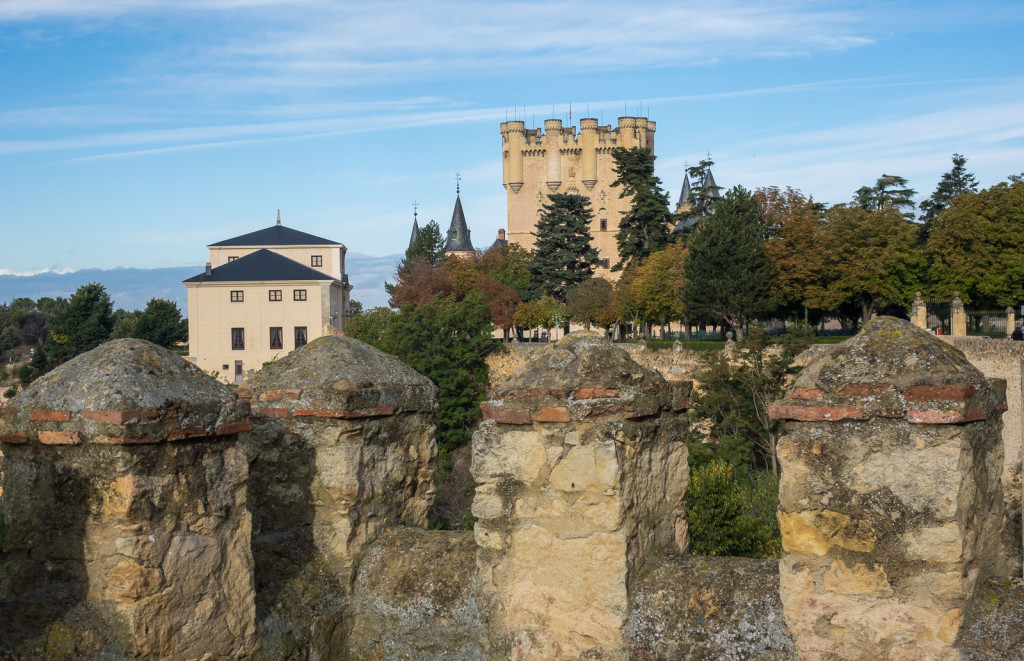Segovia is about an hour north of Madrid. As you approach the city, you see the Alcazar (former royal castle) from the outskirts of town, looking uphill. Marie and all her classmates enjoyed posing in the park area below the castle.

The hilltop position of the castle provided a great view of anyone approaching.
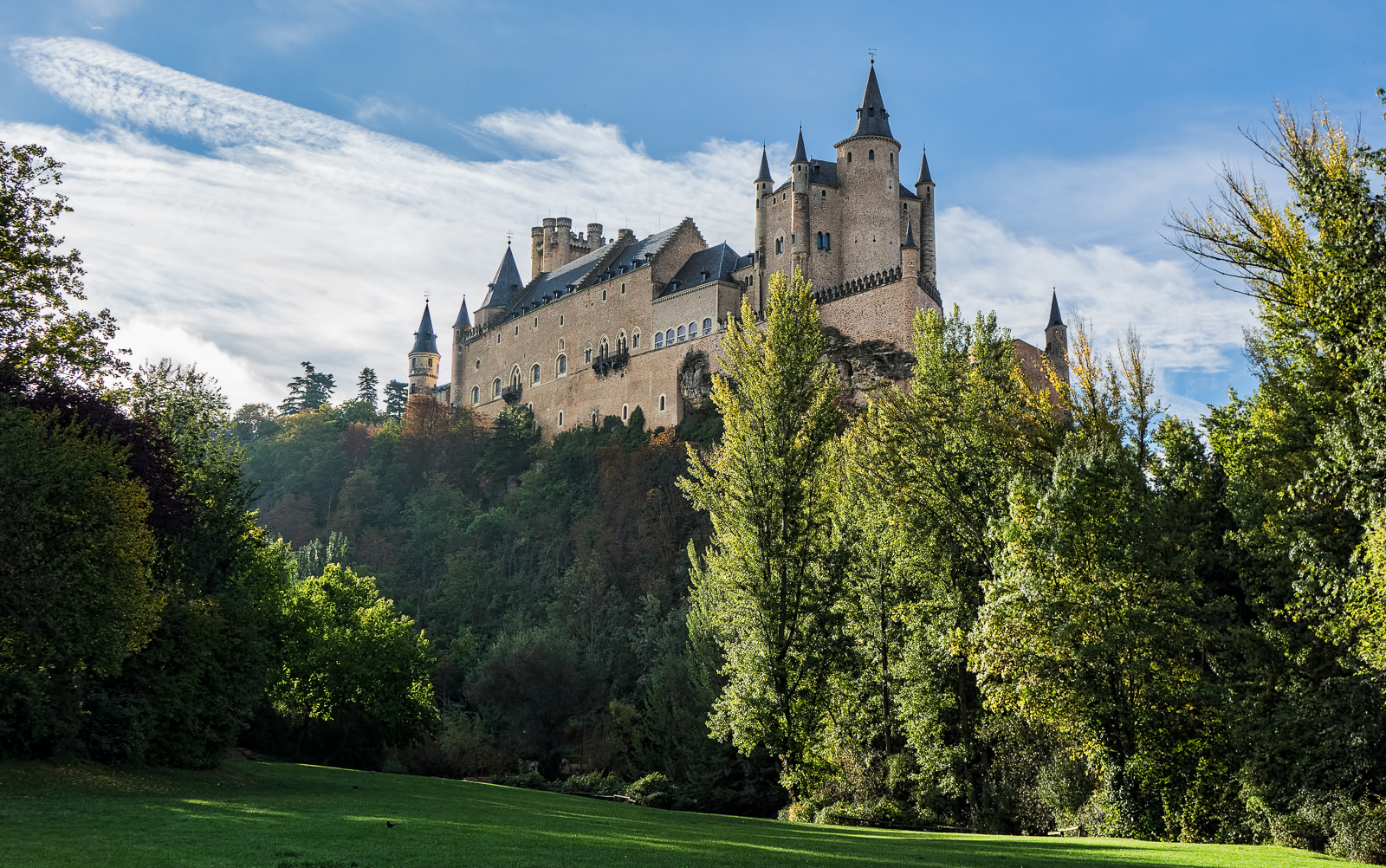
A short walk around the city affords a view of the cathedral in Segovia.
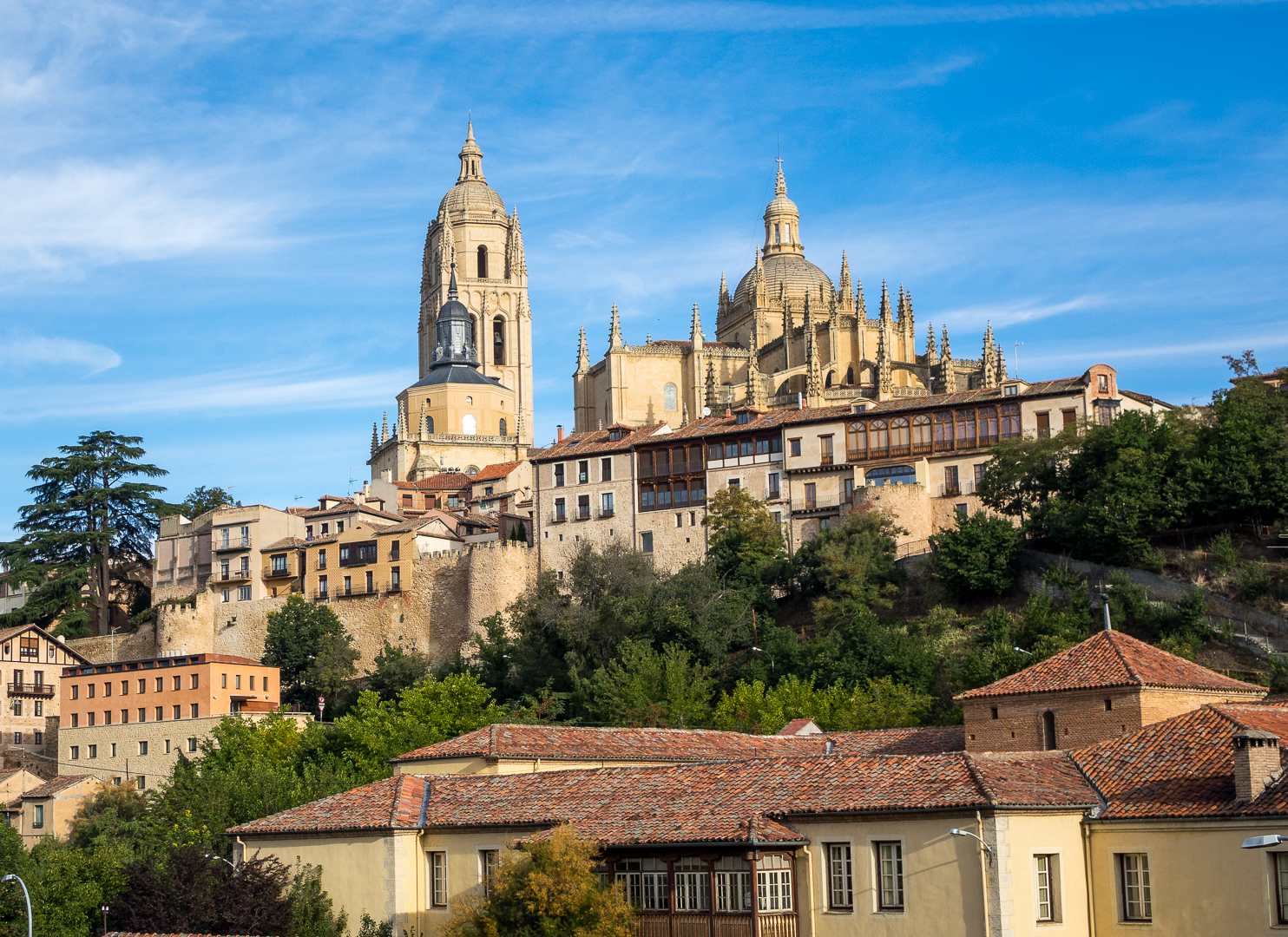
Typical flower strewn balconies adorning Spanish streets.
‘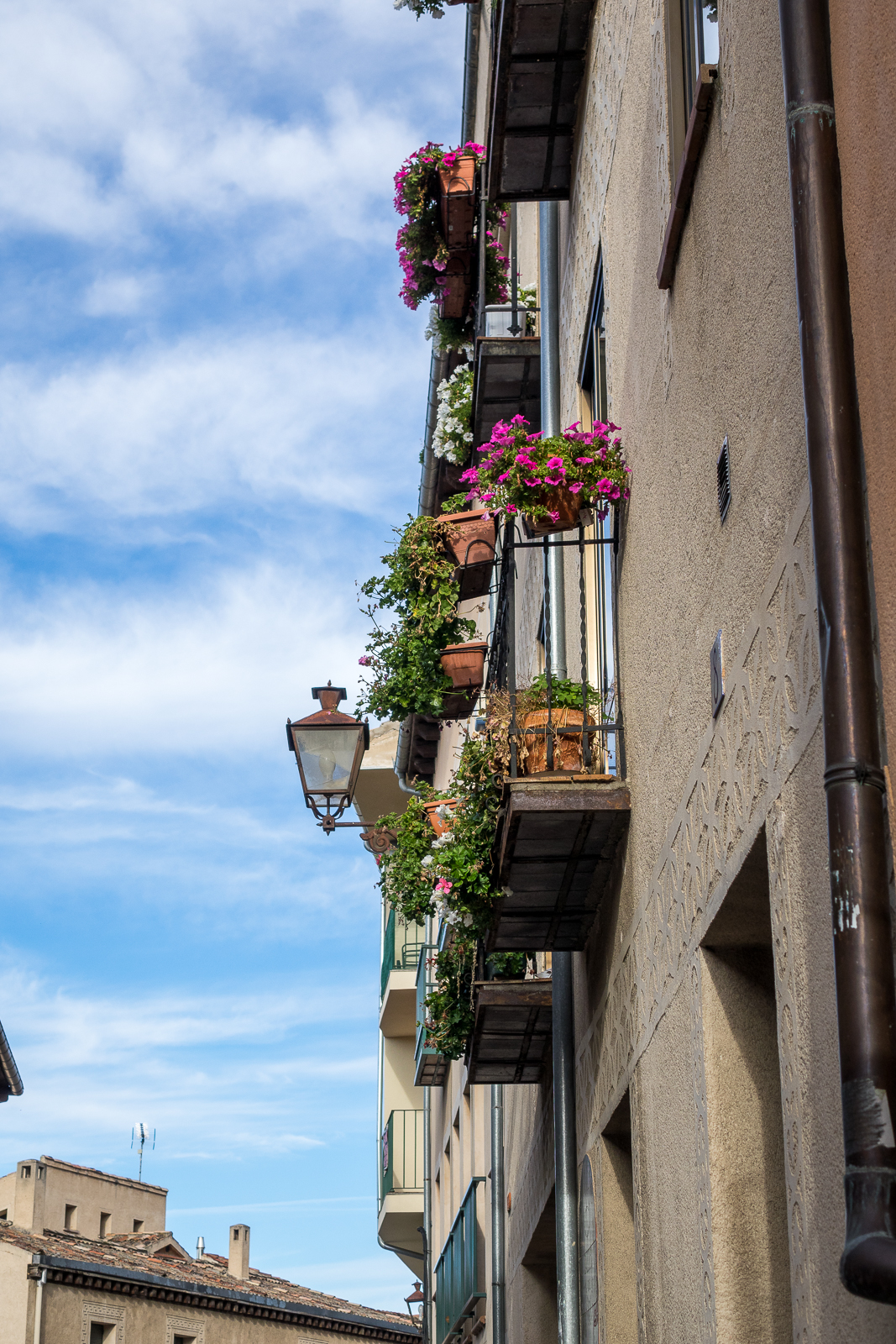
A side view of the Alcazar before you reach the entrance.
We had a nice view of the moon as we approached.
‘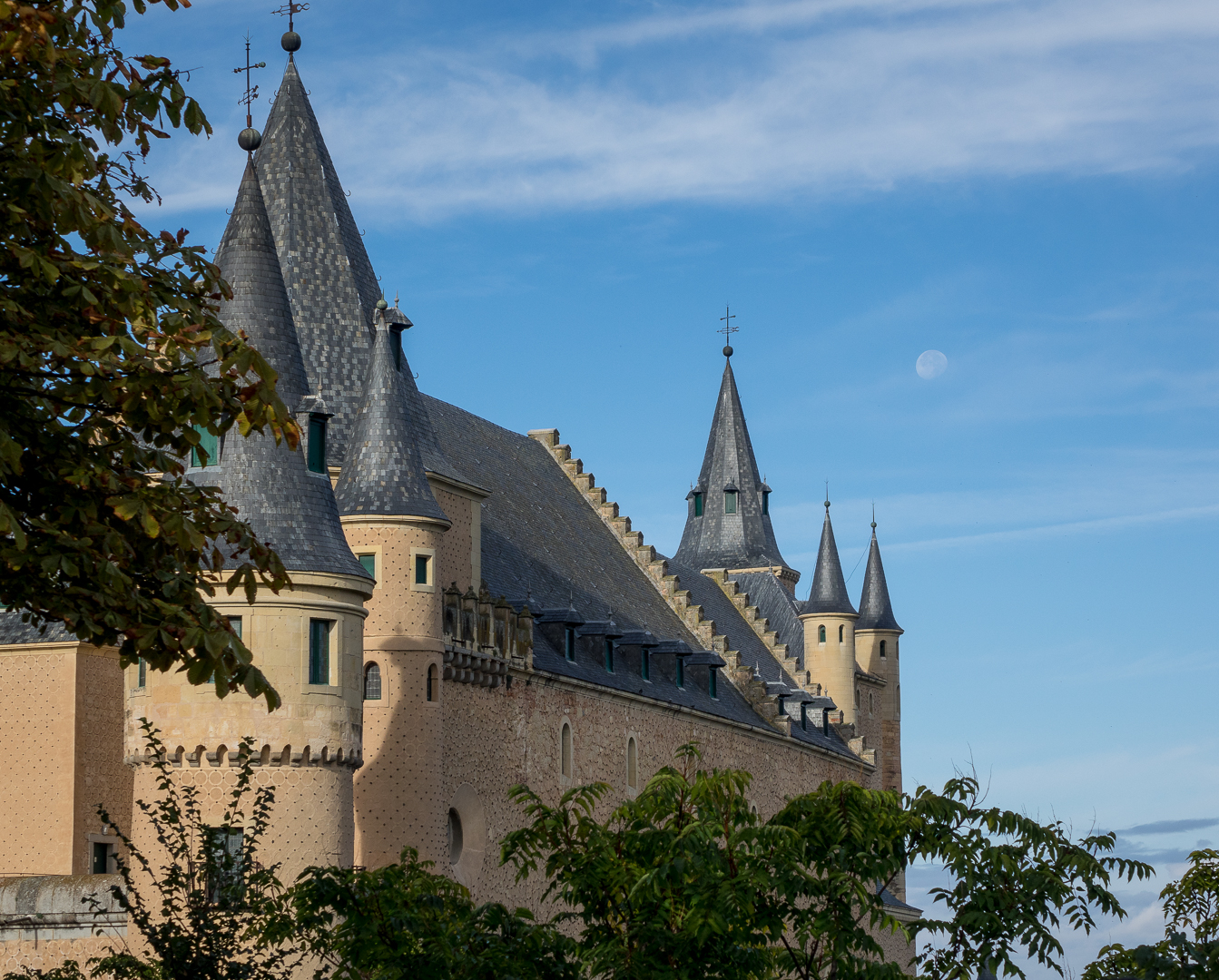
Entrance to the Alcazar. Actually, there are multiple “Alcazar” buildings throughout Spain in a variety of cities–they are palaces. This one was used by Fernando and Isabela as well as their daughter Juana (briefly). 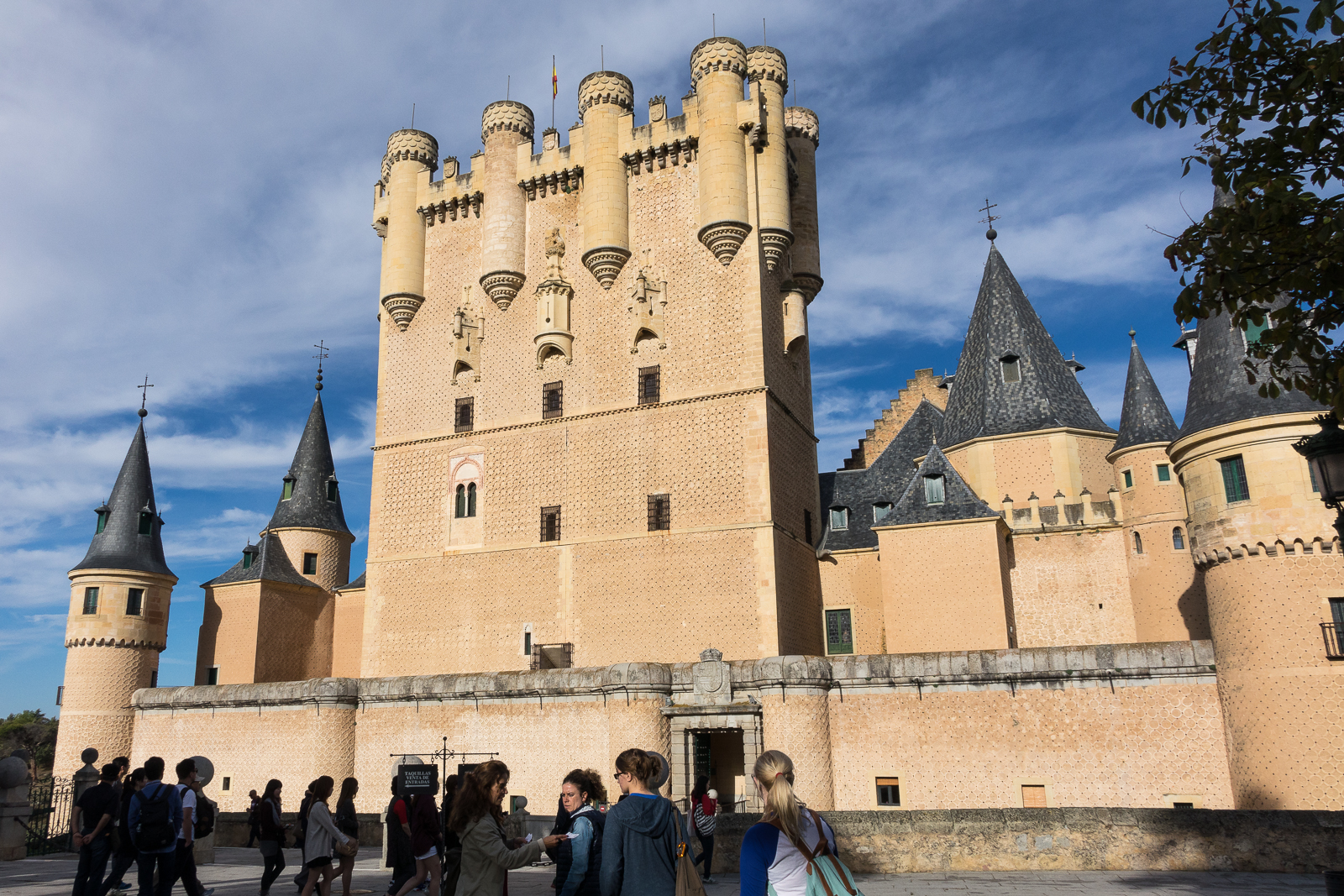
This is one of the gilded ceilings in the palace–intricate mudejar art and geometric carvings
‘
The twin thrones for Fernando and Isabela, who ruled together as the “Catholic Kings”. Their marriage united the main territories of Spain, but Isabela did not relinquish her right to rule in her own name in Castilla. Both of them were committed to reclaim the remainder of Andalcia, the area of Granada, from its Muslim occupants.
”.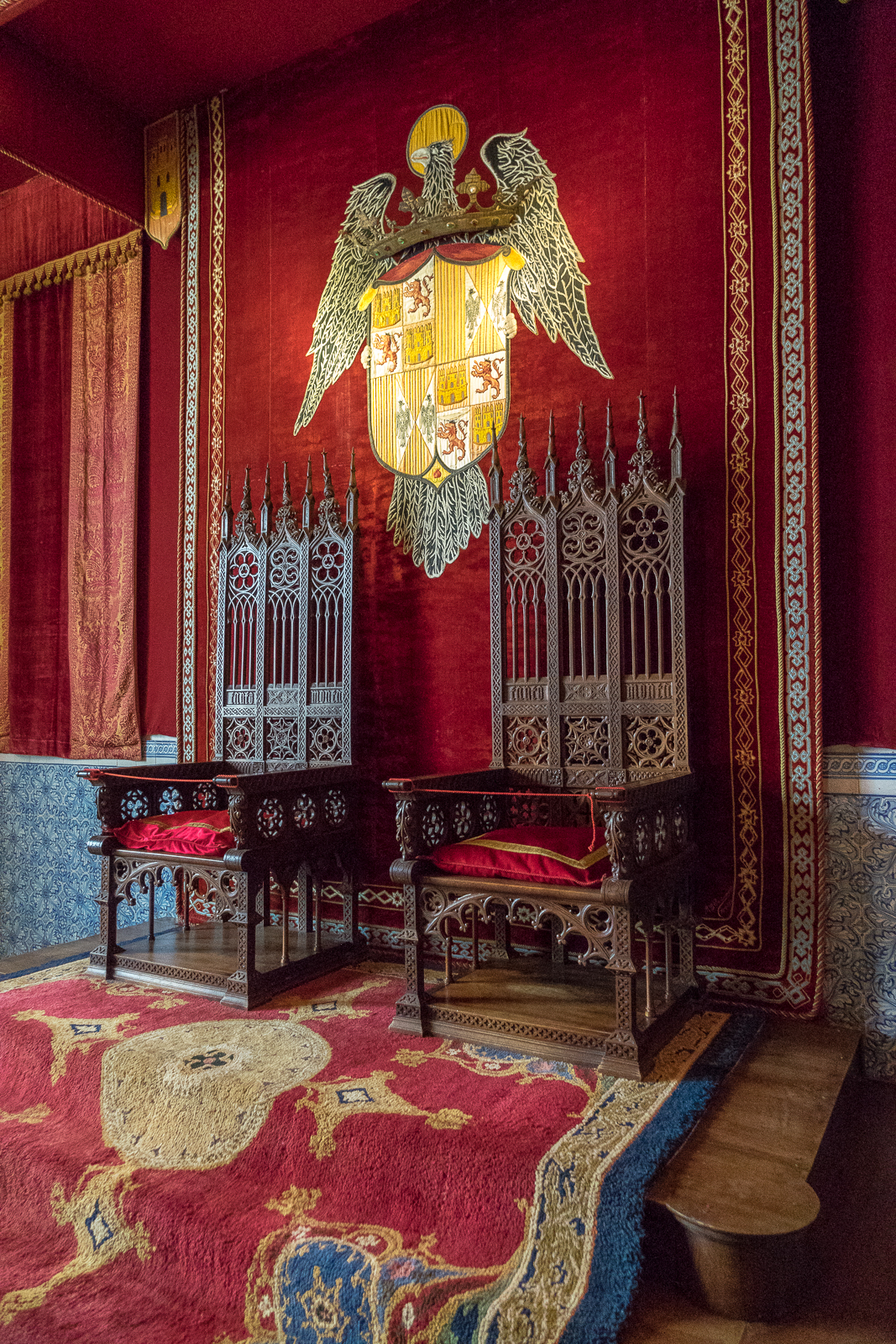
Ceiling over the throne room/ambassador’s receiving room.
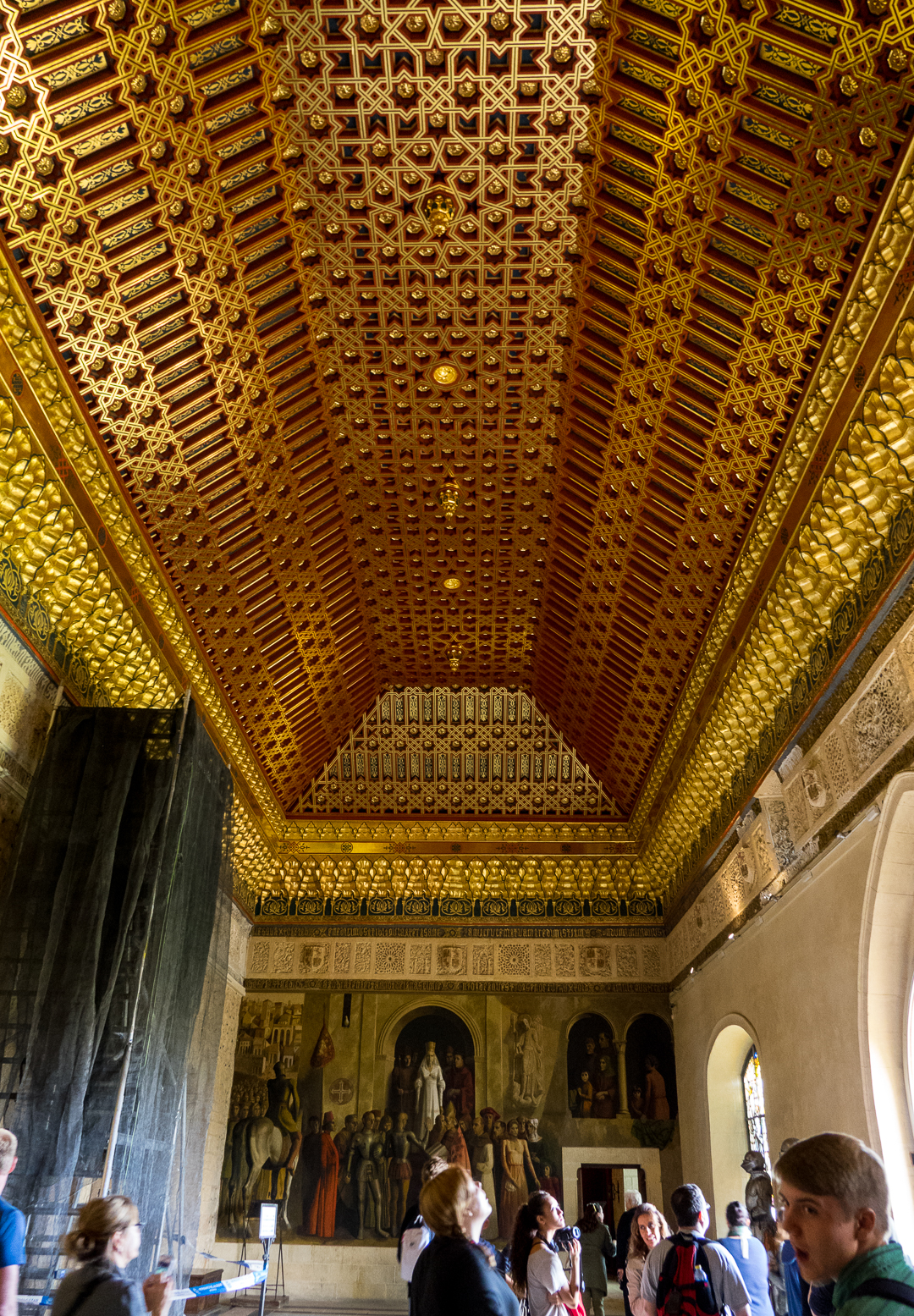
The cornices below the ceiling are lined with all the Spanish kings who ruled from the start of the “Reconquista”–starting with Pelayo, down to Fernando and Isabela and their daughter Juana. Juana succeeded her mother since her only brother died as a child. She married Felipe el Guapo (Phillip the Fair), whose marriage bonded her family to the Hapsburgs of the Holy Roman Empire. (Their own son, Charles V, succeeded to both the throne of Spain and that of the Hapsburg dynasty in central Europe.) When Felipe died very young, legend says that Juana refused to allow him to be buried for days…this incident and her unhappiness with his continual philandering supposedly led to her mental collapse. Recently, the theory is that she really was not “Juana la Loca”. Her father Fernando just didn’t intend to share his throne with Juana and found this a convenient excuse to lock her up for years. She never really raised her son, who was sent to Germany, and her “mental instability” was quite convenient for Fernando and Carlos to rule as they pleased.
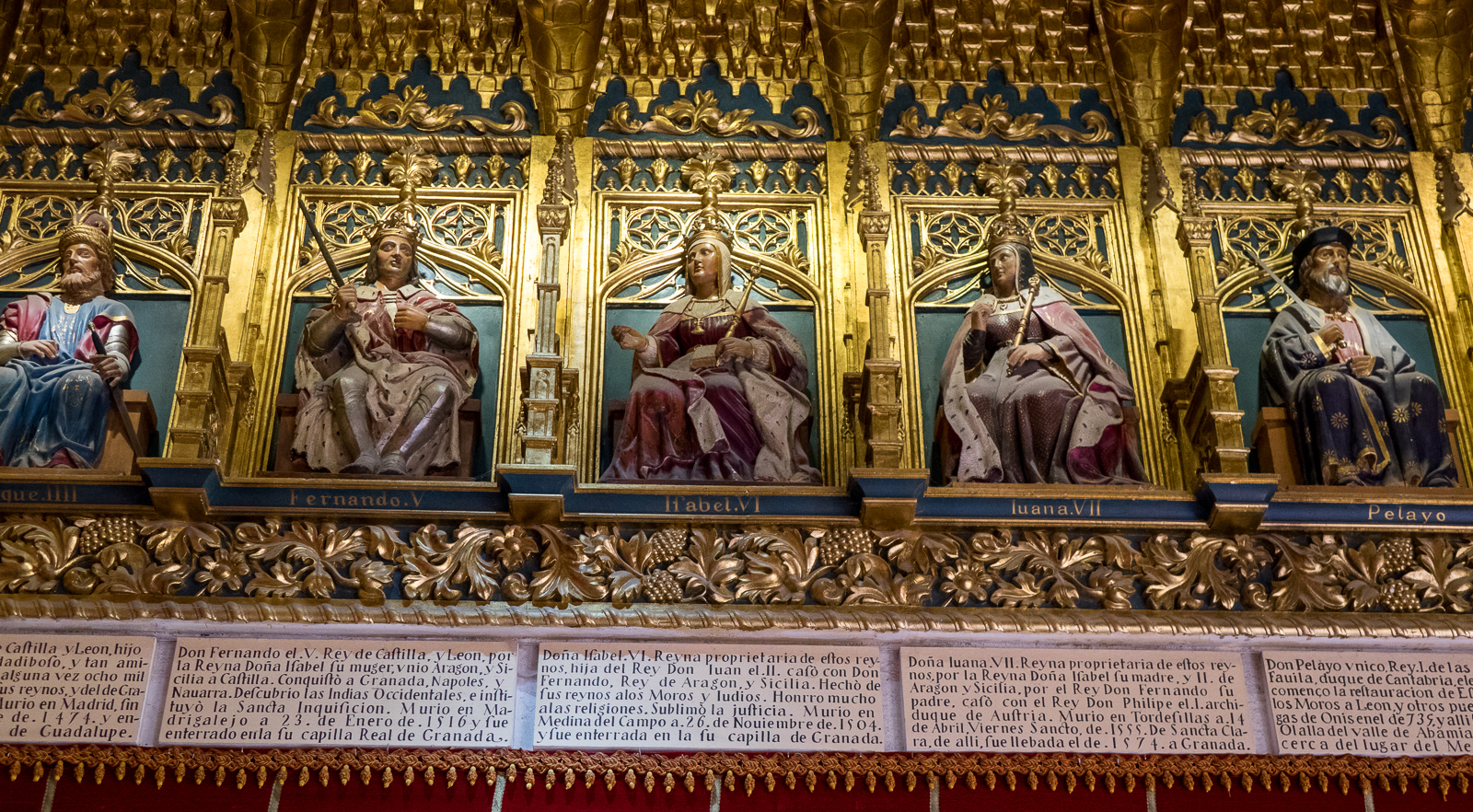
”
Lovely view of the outskirts of Segovia from the ambassador’s receiving room in the Alcazar.
‘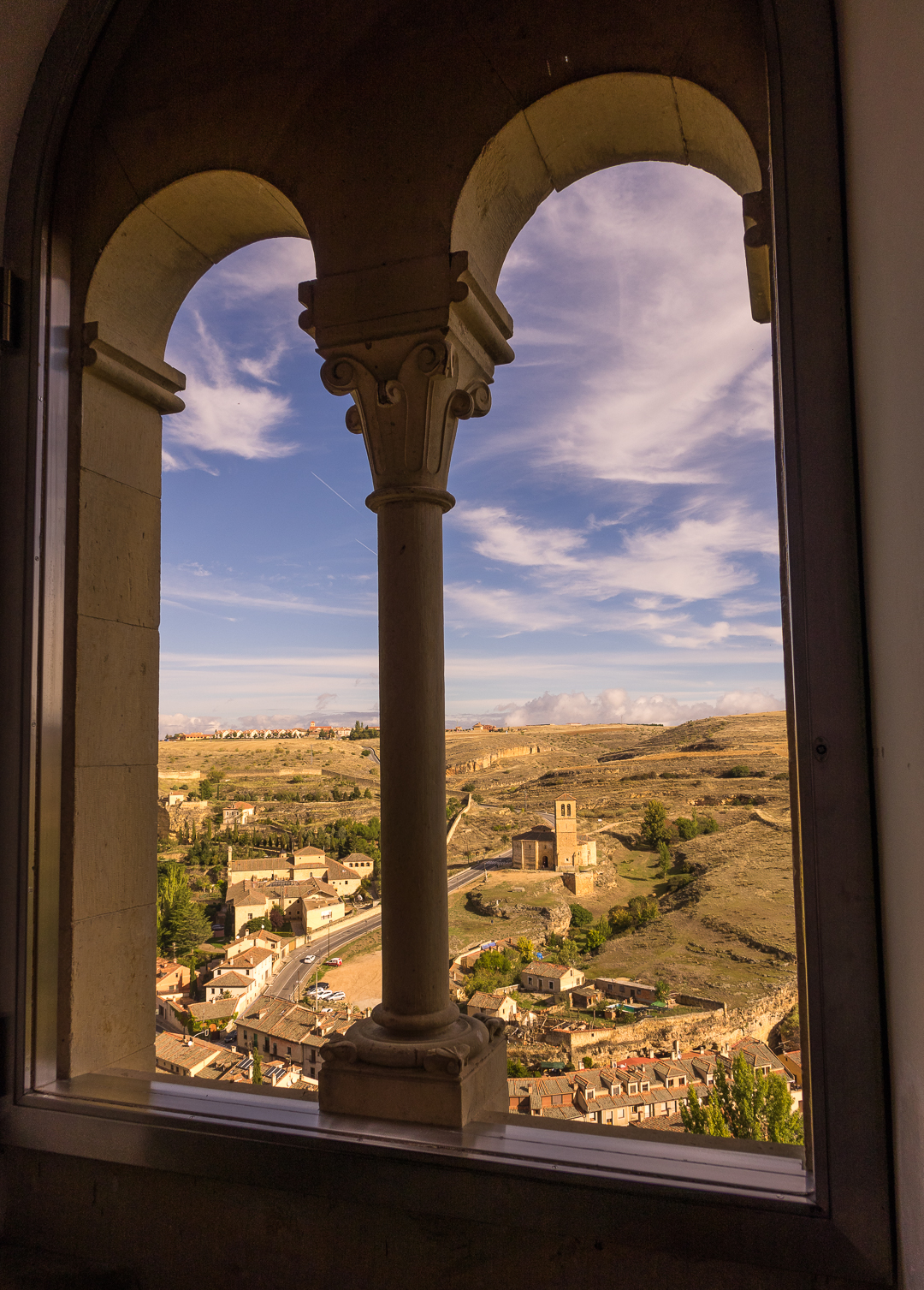
”
Group photo of our Fountain Hills High School tour group, minus our leader Karla Primosch, who was also taking photos. Most of these kids have been in at least one of my classes. Marie is on the far right.
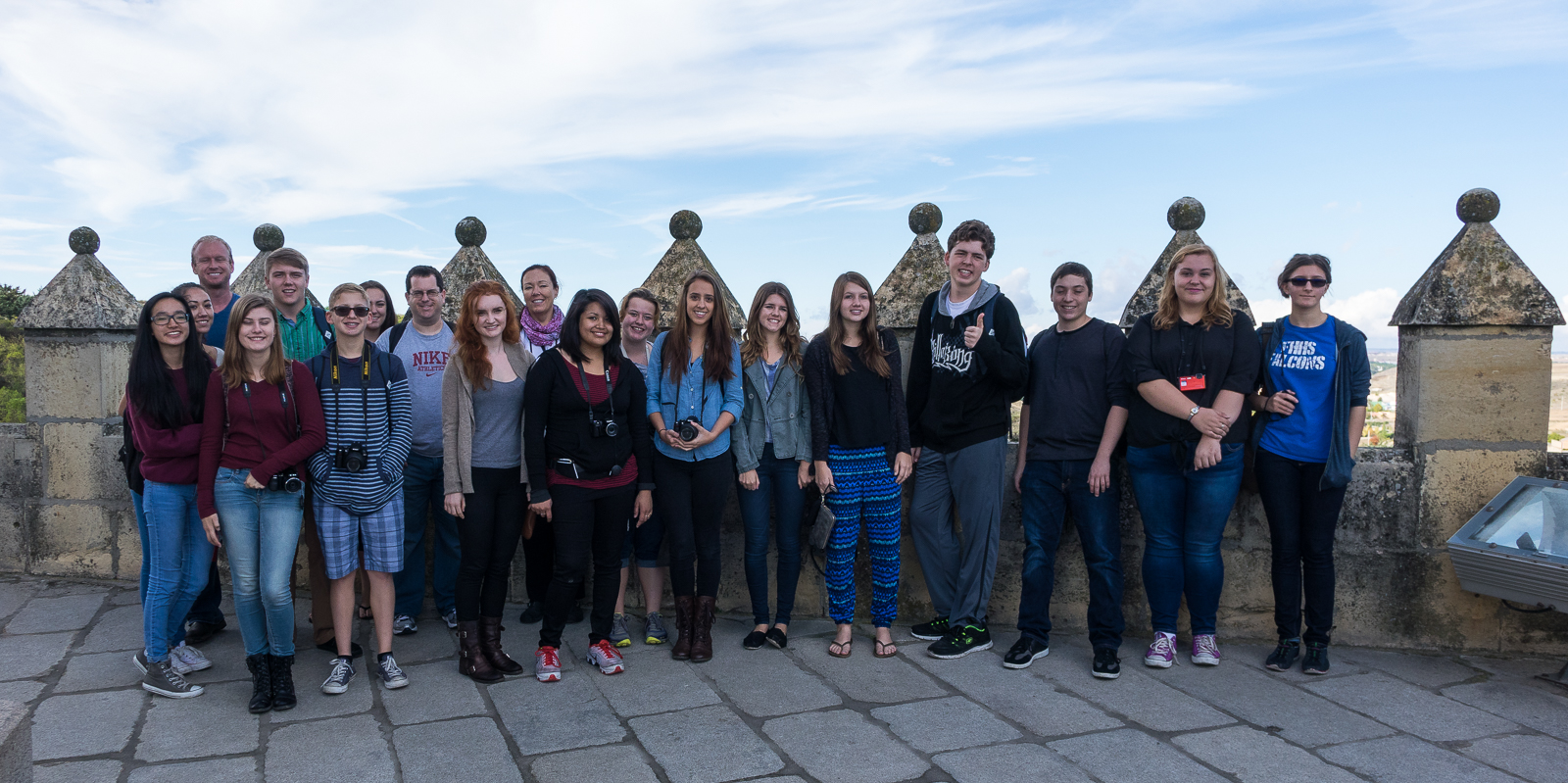
View from the towers of the Alcazar. Sage–climbing the stairs–is a photography student who compiled a series of photos from the tour into a book for her fellow students.
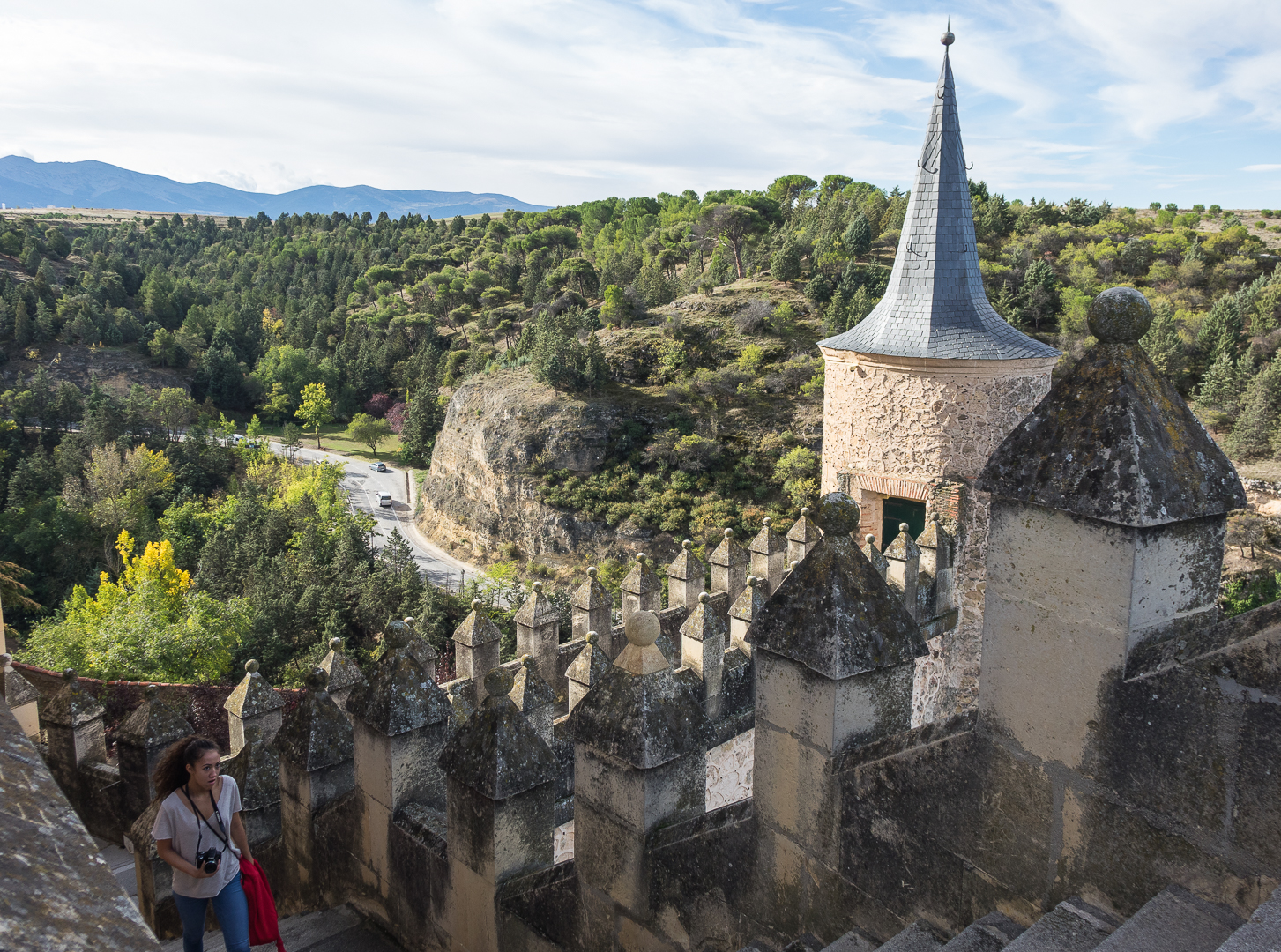
The armory room in the Alcazar was full of weaponry and armor for soldiers and horses.


Karla Primosch, one of our art teachers and the tour leader, shared an iPhone shot with Sage (left side of photo) in the armory room.
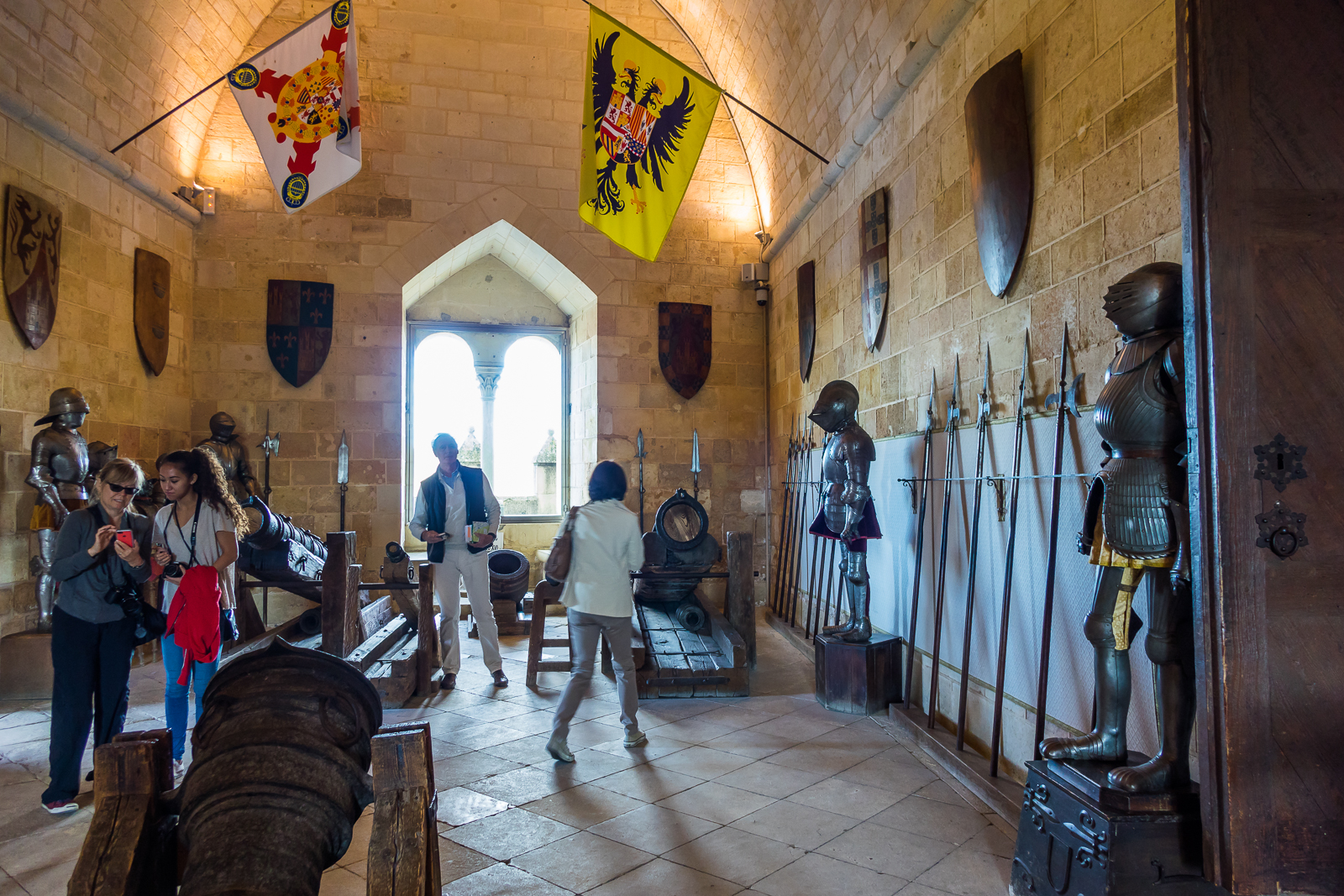
The main plaza in Segovia is cheerful and inviting to tourists taking a break from a day of walking.
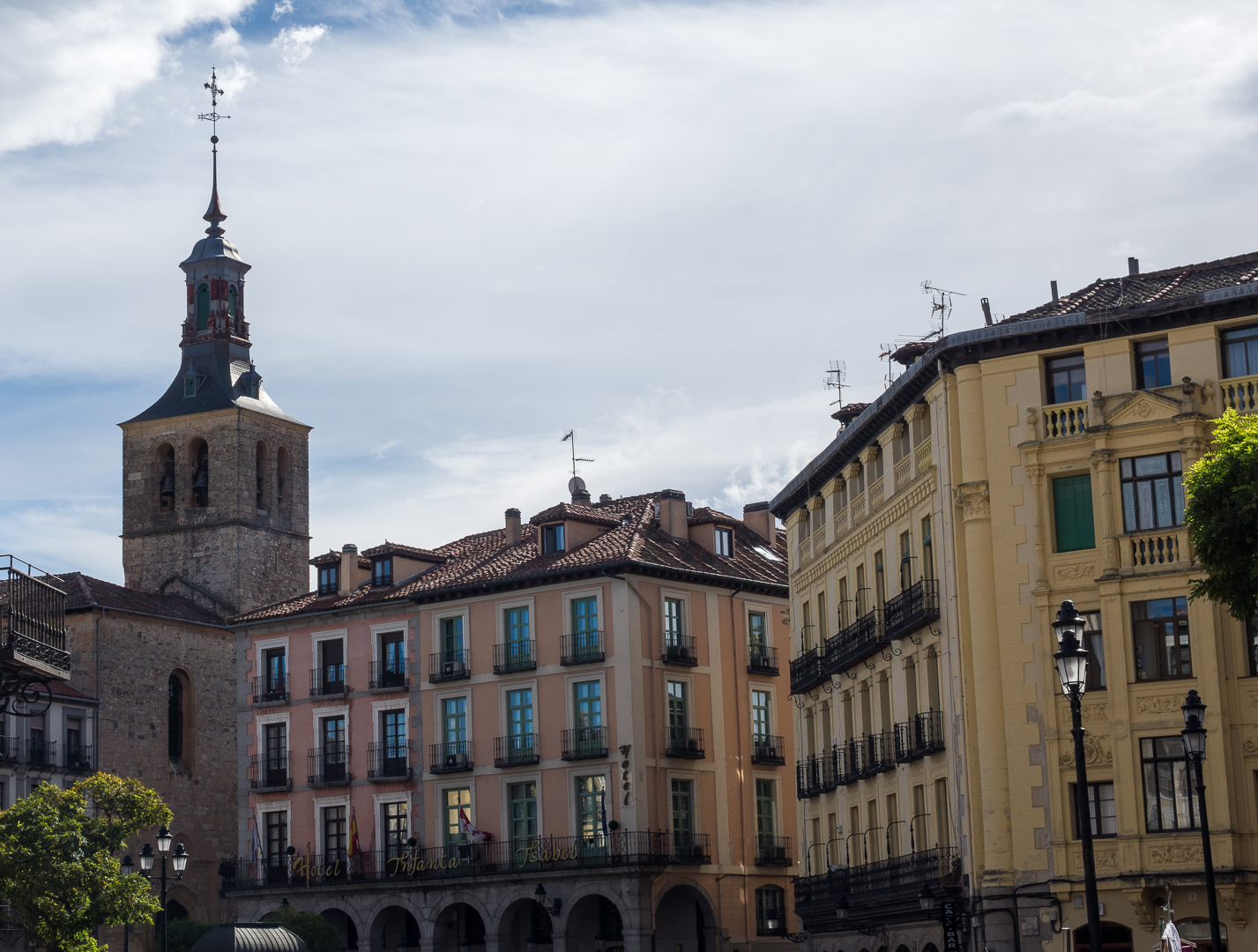
Segovia also boasts a Gothic cathedral of sizable proportions.
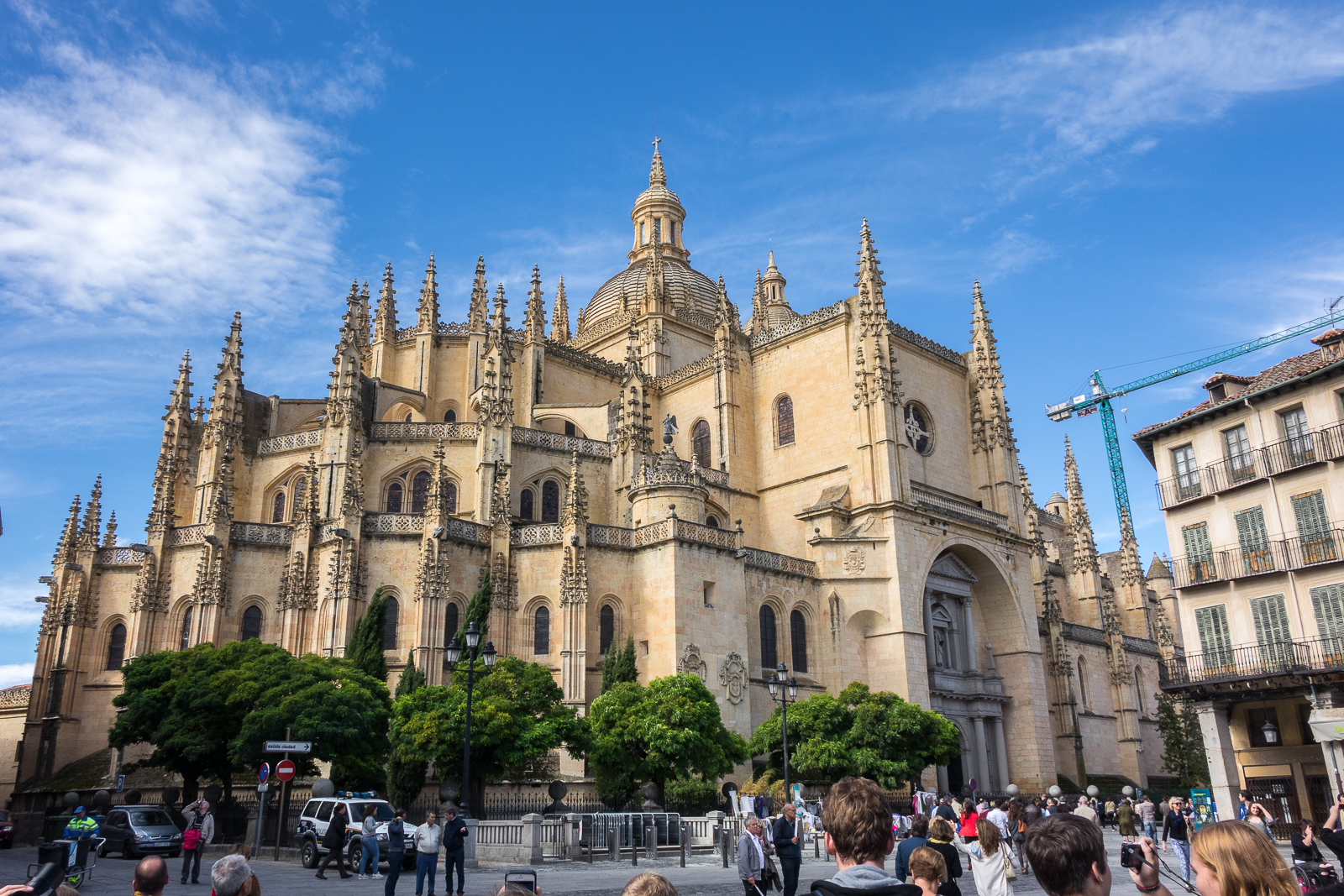
This back side of the cathedral is the only wall with Romanesque columns, which predate the building of the Gothic sections. Reminds me of the Romanesque architecture in the north that I studied as a university student.
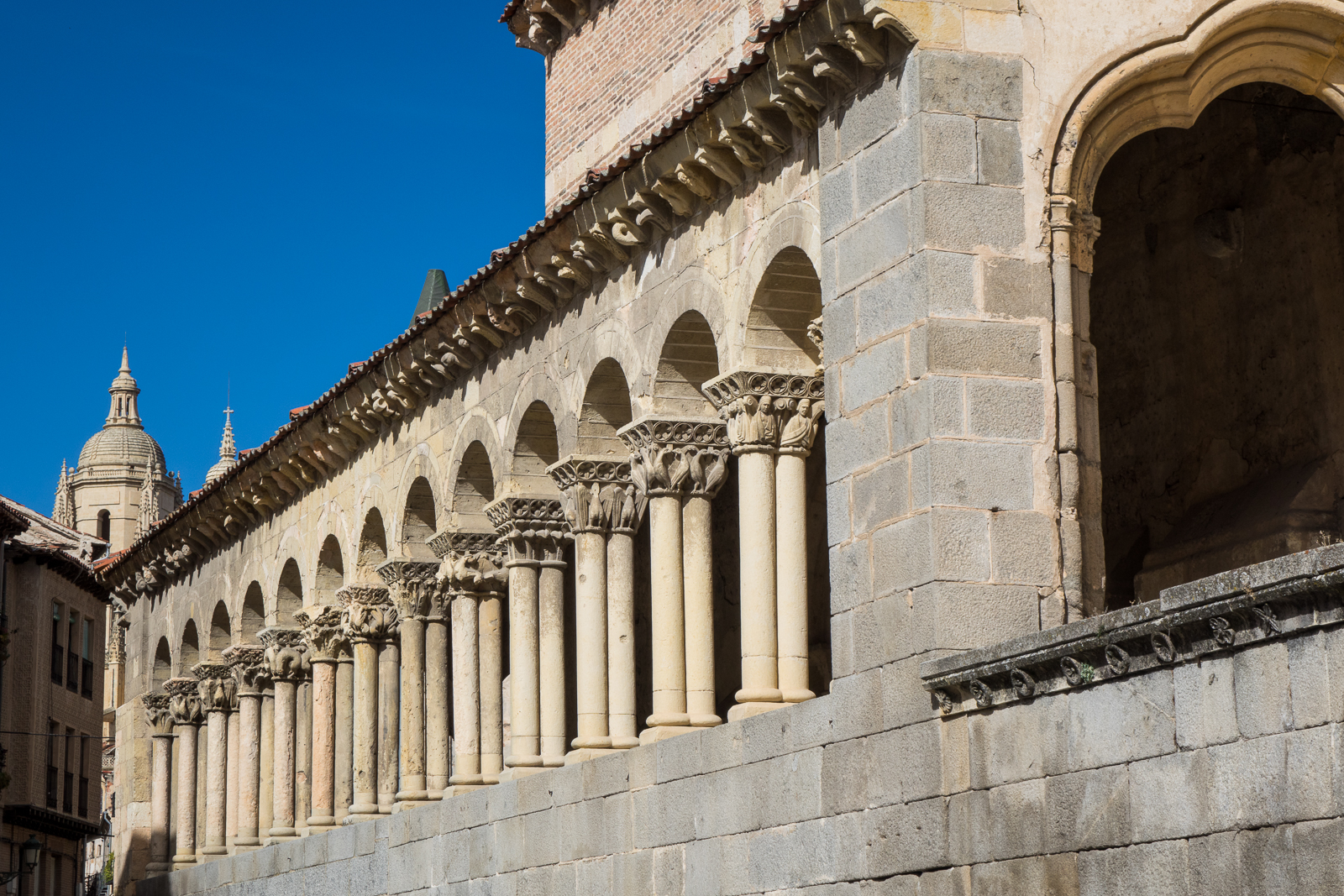
A short walk from the town center and the cathedral, everyone flocks to see the famous Roman Aqueduct of Segovia.
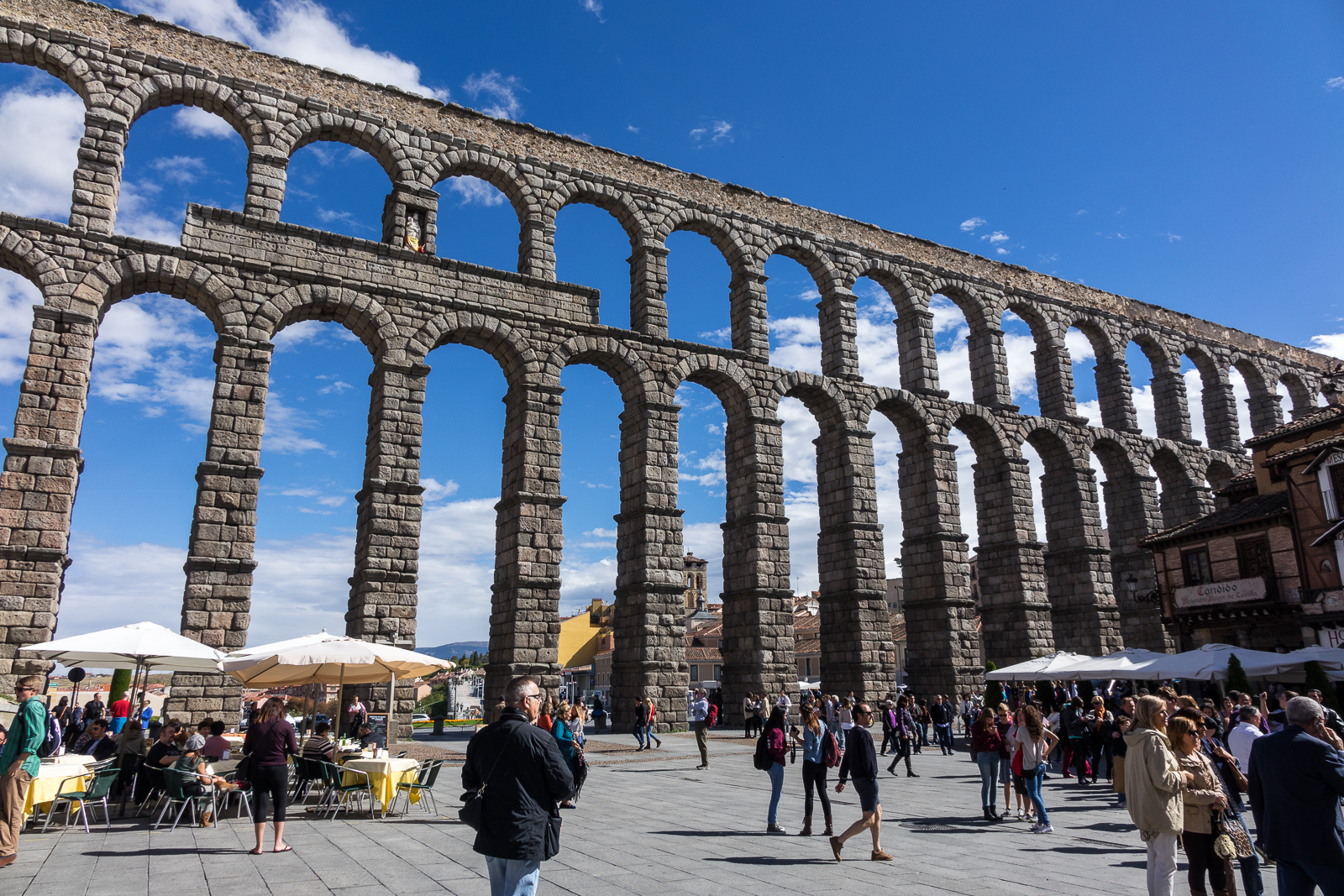
Rome sent a congratulatory sculpture (Mama wolf, Romulus and Remus representing mother Rome) to congratulate Segovia on the 2000 year anniversary of its aqueduct.
‘
